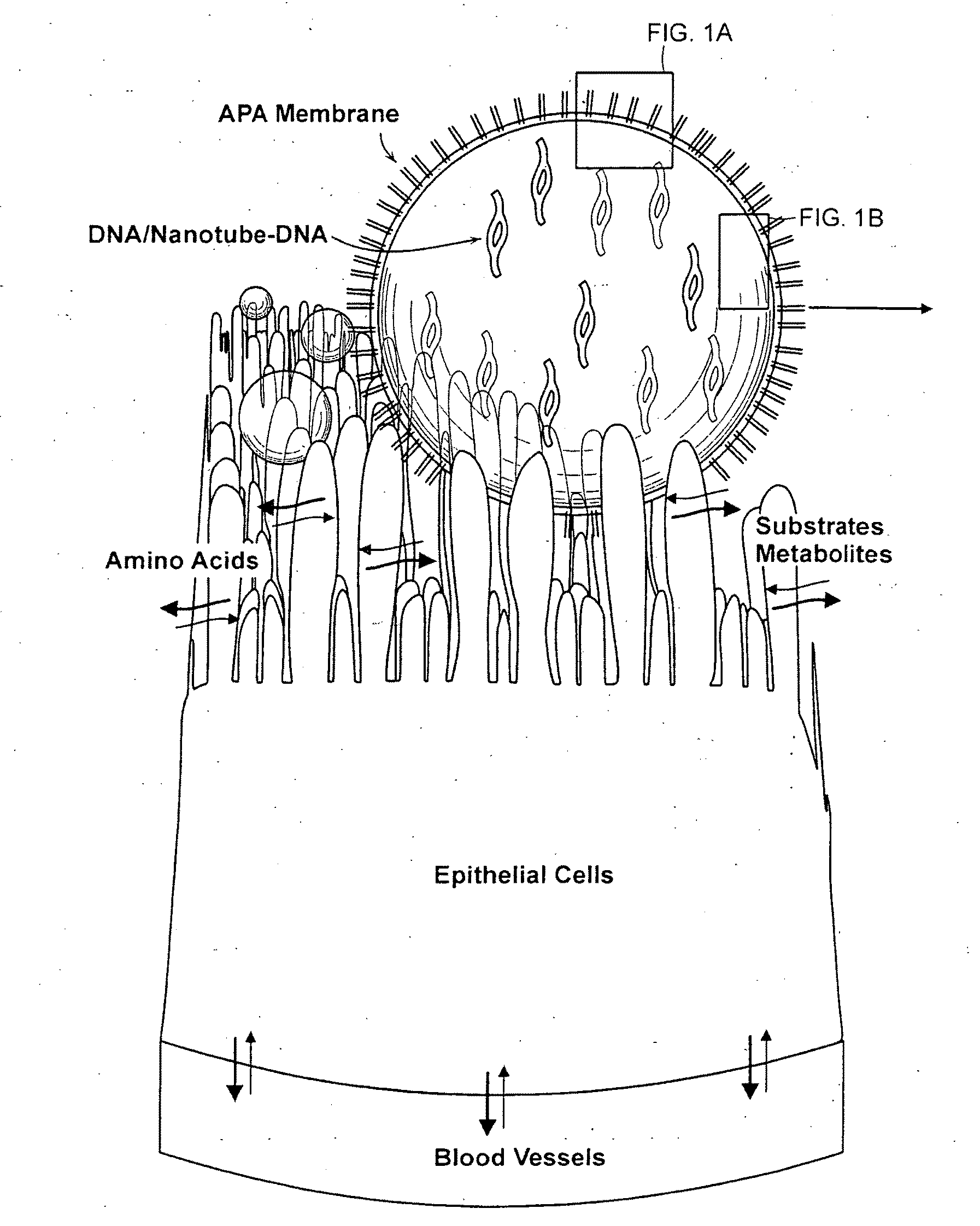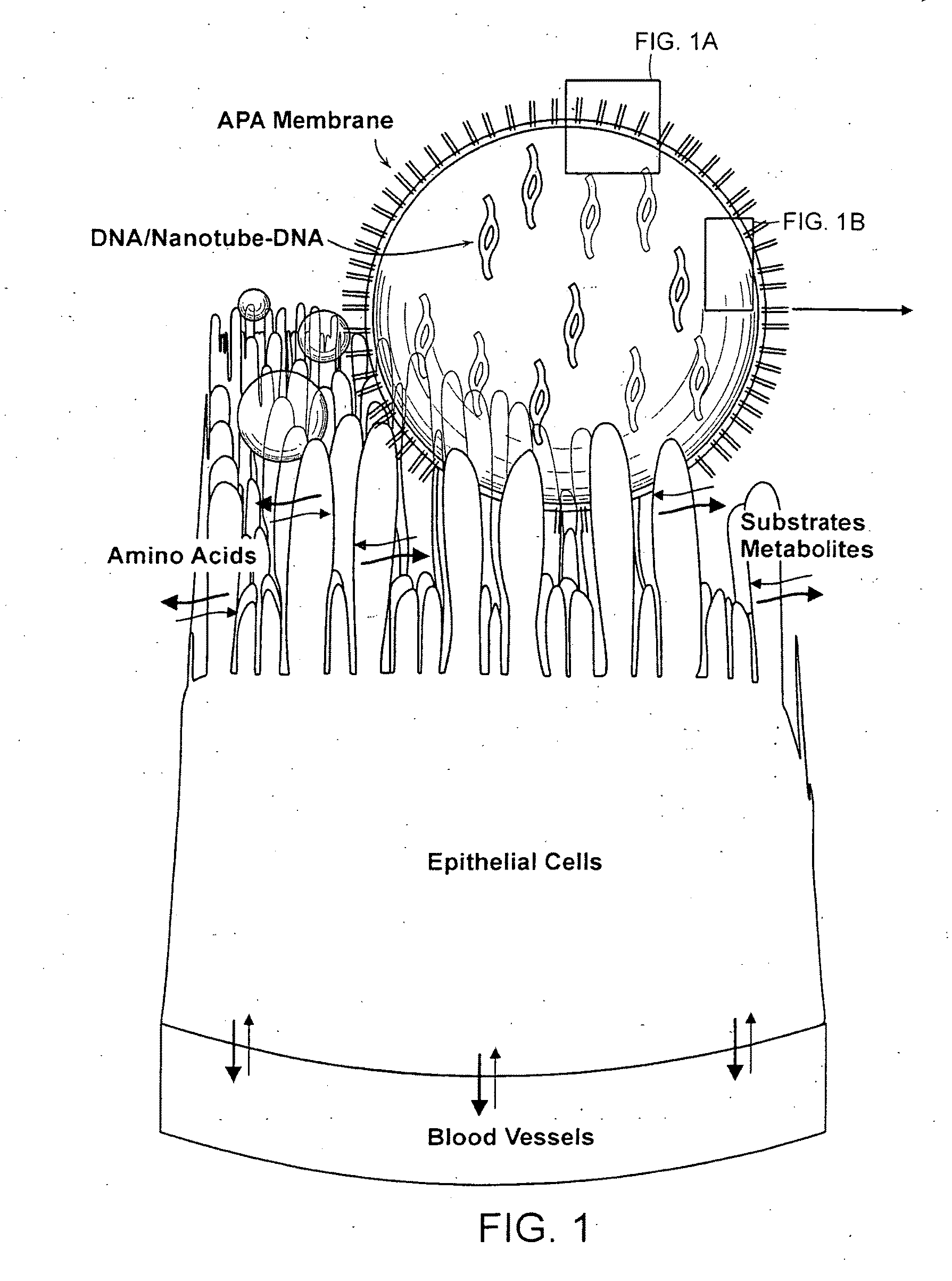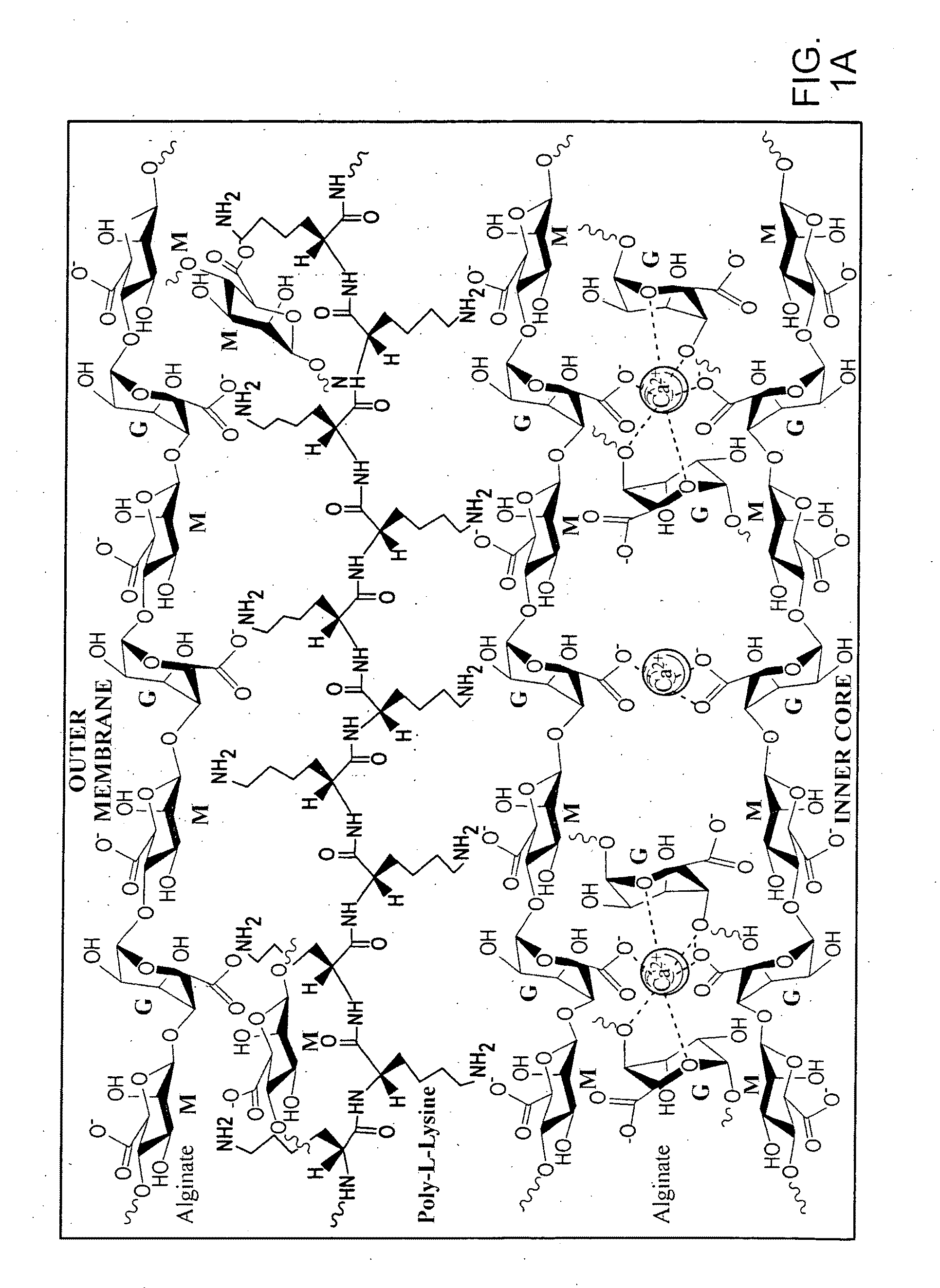Microcapsule Nanotube Devices for Targeted Delivery of Therapeutic Molecules
a technology of therapeutic molecules and nanotubes, which is applied in the direction of drug compositions, antibody medical ingredients, peptide/protein ingredients, etc., can solve the problems of lack of target specificity, system difficulties, and inability to meet the needs of patients, etc., and achieve the effect of sufficient resistan
- Summary
- Abstract
- Description
- Claims
- Application Information
AI Technical Summary
Benefits of technology
Problems solved by technology
Method used
Image
Examples
example 1
Fabrication and Characterization of Carbon Nanotubes
[0076]Carbon nanotubes are prepared by any one of the following three methods.
[0077](1) Arc-discharge (AD) method utilizes a graphite rod as carbon source and the reaction is triggered by arc discharge from high density current. This method can produce SWNTs and MWNTs. The main advantage of arc grown MWNTs is that they can be grown without any metal catalyst. This makes them especially attractive for in-vivo applications. The SWNTs usually contain up to 50% amorphous carbon and 5% metallic catalyst but they can be easily purified of metals by established processes.
[0078](2) Chemical vapor deposition (CVD) method is considered a better choice to produce controllable nanotubes. There are several advantages for CVD process: (a) CVD process is more controllable, the reaction process can be controlled by adjusting temperature, pressure or chemical vapor precursor, thus the purity and morphology of carbon nanotubes can be optimized. (b) ...
example 2
Functionalization of Carbon Nanotube with DNA of Interest for Targeted Delivery
[0080]The above-prepared nanotubes are made hydrophilic by ultasonicating them in a sulfuric and nitric acid mixture (3:1) for a suitable period of time to functionalize nanotube sidewalls and tips with hydrophilic carboxylic acid and hydroxyl groups to form stable suspensions in water and to remove unwanted iron catalyst particles entrapped inside the nanotubes.
[0081]Once this is achieved, nanotubes are used for subsequent functionalization. Suitable functionalization techniques are described, for example, in Kostarelos, K. Carbon nanotube-mediated delivery of peptides and genes to cells: translating nanobiotechnology to therapeutics. J. Drug Del. Sci. Tech., 15 (1), 41-47 (2005).
[0082]Carbon nanotubes are first covalently modified by using a method based on the 1,3-dipolar cycloaddition of azomethine ylides to yield ammonium functionalized CNTS. An aqueous solution of these ammonium functionalized CNTs ...
example 3
Methods for Making Microcapsule Carbon-Nanotube Devices
[0083]Functionalized nanotubes are suspended in polymer matrix (e.g. alginate). The viscous polymer-nanotube DNA suspension is then pressed through a 23-gauge needle using a syringe pump. Compressed air press through a 16-gauge needle is used to shear the droplets coming out of the tip of the 23-gauge needle. The droplets are allowed to gel for 15 minutes in a gently stirred ice-cold solution of solidifying chemicals, such as CaCl2 (1.4%).
[0084]After gelation in the CaCl2, beads are washed with HEPES (0.05%, pH 7.20) and coated with poly-L-lysine (0.1% for 10 min) and wash again in the HEPES (0.05%, pH 7.20). The resulting capsule is then be coated with poly-L-lysine (0.1%) for 10 minutes followed by alginate for 30 minutes. After another HEPES (0.05% in HEPES, pH 7.20) washing, the resultant capsule is finally coated for 10 min with alginate (0.1%). The microcapsules are then washed with appropriate chemicals to dissolve their ...
PUM
| Property | Measurement | Unit |
|---|---|---|
| Selectivity | aaaaa | aaaaa |
Abstract
Description
Claims
Application Information
 Login to View More
Login to View More - R&D
- Intellectual Property
- Life Sciences
- Materials
- Tech Scout
- Unparalleled Data Quality
- Higher Quality Content
- 60% Fewer Hallucinations
Browse by: Latest US Patents, China's latest patents, Technical Efficacy Thesaurus, Application Domain, Technology Topic, Popular Technical Reports.
© 2025 PatSnap. All rights reserved.Legal|Privacy policy|Modern Slavery Act Transparency Statement|Sitemap|About US| Contact US: help@patsnap.com



